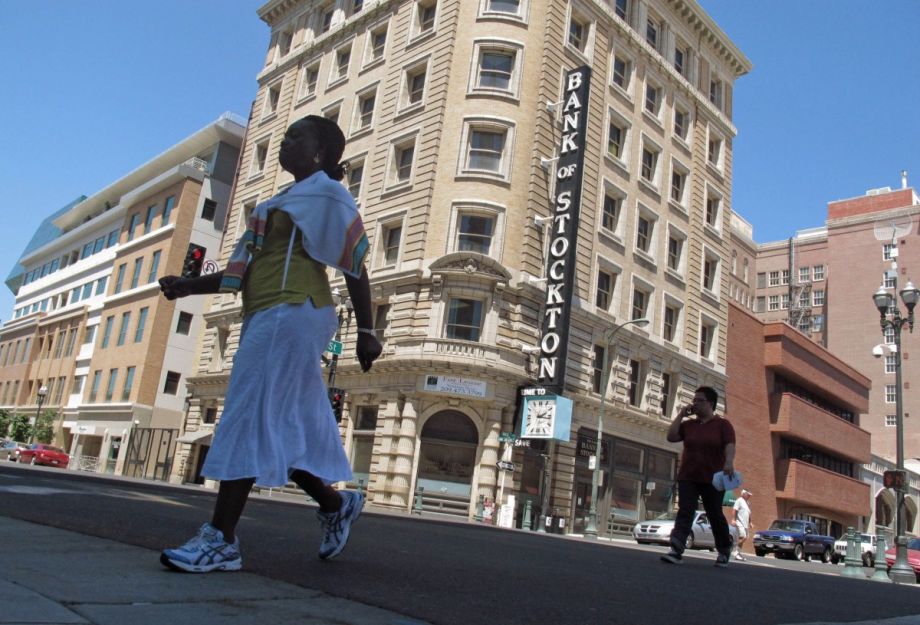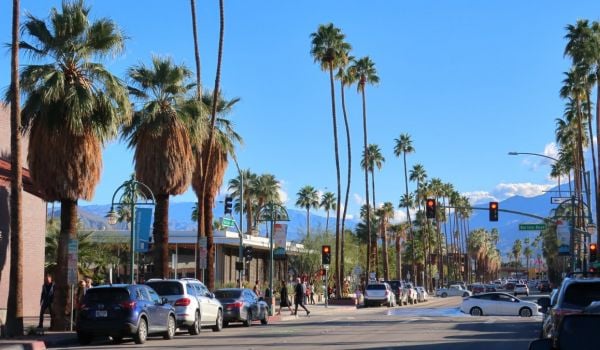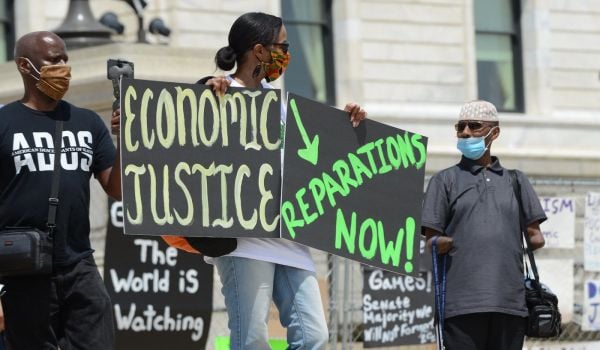On September 2, lawmakers in California sent a bill to Governor Jerry Brown’s desk that will reinforce the state’s already remarkable efforts to assist urban communities most affected by pollution. The bill expands on the Greenhouse Gas Reduction Fund, which California companies pay into in exchange for leniency on emissions restrictions, to direct 25 percent of the money toward countering contaminants in disadvantaged neighborhoods. Another 10 percent would go to helping low-income families step out of poverty.
California residents in medium-sized and economically disparate urban areas like Stockton are already seeing GGRF at work, in the form of fund-supported initiatives like home weatherization assistance and vouchers for fixing smog-spewing cars that rolled out last year. But the three-year-old GGRF program, which is overseen by the California Air Resources Board, is now trying to make sure its efforts reduce pollution profiles and break down economic barriers in neighborhoods like Stockton ZIP codes 95205, 95203 and 95206. These are considered some of the most polluted areas in California, and have long struggled with poverty because of a legacy of redlining and subprime lending tactics.
“This is the first time in California’s private investment policies where there’s been a specific project to make sure [greenhouse gas funds] benefit low-income households,” says Alvaro Sanchez, environmental equity director at the Greenlining Institute, about the new bill. Sanchez says it also establishes what’s called the Transformative Climate Communities Program, which is tasked with funding neighborhood-wide climate plans that provide the biggest economic benefit to communities identified as “disadvantaged” by lawmakers.
Over the past two years, the Air Resources Board has laid out plans and investment frameworks as suggestions for grant recipients on how to make sure local GGRF projects fight pollution, lower health problems and bring about an overall higher quality of living. But if there’s one direction California agencies should steer the growing inertia of this program, it’s making sure these green projects employ local hires.
The state encourages agencies to work with local workforce development centers and green job training institutes when putting projects together, but it only mentions, in no binding way, that these hires should come from the disadvantaged communities GGRFs were created to benefit.
Colleen Callahan, deputy director at the UCLA Luskin Center for Innovation, says the state doesn’t yet have a system in place to really monitor the economic impacts or jobs created by this system. Street cleanups and LEED-certified affordable housing projects are tools that can help in the fight against economic disparity on a neighborhood level, but even though they create jobs, no one knows “how many, where and who’s getting employed, and the quality of those jobs.”
Pushing municipalities to incentivize local hires in GGRF projects would be like killing two birds with one stone: You’d clean up neighborhoods identified by CalEnviroScreen as disadvantaged, and put job seekers in those communities to work. “I mean we’re talking thousands and thousands of jobs,” says Callahan, “because we’re talking billions of dollars being invested.” Since 2012, the GGRF has generated $2.2 billion for green projects, though nearly 25 percent of that is going toward the state’s high-speed rail project.
The GGRF program is still in its infancy, but civil society leaders in Stockton say they haven’t yet seen an economic ripple on the ground level. During an August 2 event called “Greenlining the Hood” that was held by local poverty and family services nonprofit Fathers and Families of San Joaquin and the Greenlining Institute, local stakeholders got together to hash out just what they want to see from cap-and-trade funds.
Sammy Nuñez, executive director of Fathers and Families of San Joaquin, says jobs were a major part of that discussion. “The missed opportunity is not offering job training and development for these communities,” he says. “It’s almost non-existent, so [the impact of those funds] isn’t necessarily trickling down to the community level.”
Stockton is a prime example of how greenhouse gases from industry and highways can combine with historically impoverished communities to curtail a neighborhood’s quality of life index. You can predict how long someone will live just by finding out what census tract they call home. In ZIP 95205, life expectancy hovers around 74 years old. Asthma-related doctor visits happen at a rate that’s 89 percent higher than the California average in that region, and there’s a 67 percent chance your family lives beneath double the federal poverty line. Head west to 95219, and poverty and asthma issues drop off while life expectancy jumps up to 83 years old.
This info is available to the public thanks to CalEnviroScreen, a data map that ranks census tracts by pollution, poverty, average education and other indicators that legislators then use to decide which neighborhoods qualify for California’s greenhouse gas funds. In Stockton, for example, vehicle fix-up rebates backed by the GGRF are rolled out on a census tract-by-census tract basis. Neighborhoods can qualify for auto emissions repair vouchers valued anywhere from $500 to $5,000.
The environmental benefits are clear: If you reduce the number of heavy polluters on the road, or, when it comes to house weatherization programs, switch homes to solar power, your city’s carbon footprint starts to drop. And while that deserves applause, what needs to happen next is for the municipal and state agencies to frame bidding rounds so that companies that focus on local hires or work closely with California workforce development programs have a leg up above their competitors.
Grid Alternative, a national nonprofit home weatherization company that offers solar panel installation training, is a GGRF recipient that explicitly outlines local hiring as a fundamental of its practice. Last year they tapped a Sacramento youth job center when hiring for the installation of solar panels on 1,600 homes in that city.
“Currently [local hire decisions] are not at an essential place in the funding, so instead you have 13 different, distinct [state] agencies that are administering programs that are receiving money from the grant fund, and those agencies then have the ability to determine exact community guidelines,” says Callahan. While California would likely face legal backlash for trying to enforce local hire requirements at the state level because of its constitutional limitations on business procurement, she says cities can “do a lot with the [GGRF] guidelines to incentivize local hires.” Some cities, like San Francisco, already have 30 percent local hire requirements on construction projects, but the state can encourage municipalities to get creative with incentives that don’t entirely turn off developers. (St. Petersburg, Florida, for example, is trying out a lax local hire incentive that says the city will pay contractors faster if 30 percent of a construction project’s workers live in Pinellas County, where St. Petersburg is located.)
Callahan’s department at UCLA and the UC Berkeley Center for Labor Research and Education are currently being funded by the state to comb through the past three years of GGRF data and figure out just how many jobs California’s cap-and-trade program is creating for people from the disadvantaged communities it was designed to heal. From there, expansions to the GGRF program, like those outlined in the bill before Gov. Brown now, will be better poised to make sure green projects in poor communities generate jobs for the people who live there.
Sanchez says he’s optimistic about that outcome. Project proposals for GGRF grants in the past haven’t emphasized local hiring quotas as strongly as he’d like to see, he says. “We’re still kind of trying to wait to see how the state is going to collect that information and report on those economic outcomes,” he says. “It’s been an area where we want to see a lot more progress, but we just haven’t seen it yet.”

Johnny Magdaleno is a journalist, writer and photographer. His writing and photographs have been published by The Guardian, Al Jazeera, NPR, Newsweek, VICE News, the Huffington Post, the Christian Science Monitor and others. He was the 2016-2017 equitable cities fellow at Next City.
















